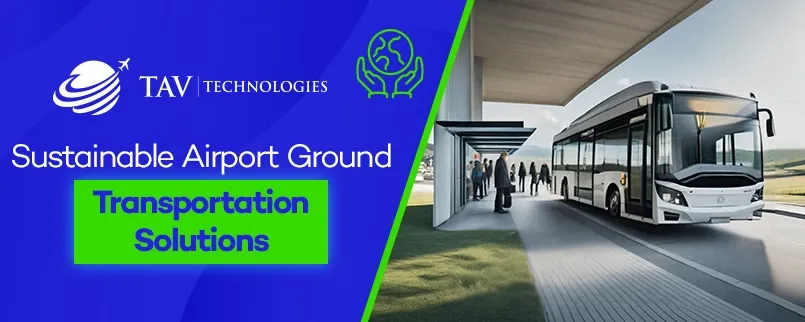
Nov 2024
As the aviation industry continues to address its environmental impact, airports are becoming hubs of sustainability, extending efforts beyond the terminal walls to include ground transportation solutions. Implementing eco-friendly access to airports is crucial for reducing carbon emissions, lowering traffic congestion, and enhancing the overall passenger experience. This blog will explore innovative solutions and technologies that are shaping the future of sustainable airport ground transportation.
The Need for Sustainable Transportation
Airports are often located far from city centers, requiring extensive transportation options to accommodate millions of passengers each year. Traditional shuttle services and private vehicles are significant contributors to greenhouse gas emissions. To mitigate this, airports worldwide are adopting sustainable alternatives that prioritize environmental consciousness without sacrificing efficiency.
Public Transit and Bicycle-Friendly Integration
Connecting airports to public transit networks is an effective way to promote sustainable transportation. Cities like Copenhagen and Zurich have integrated their airports with metro and train lines, offering passengers an eco-friendly way to access airport facilities. Additionally, cycling is gaining popularity, especially for airport employees. Airports like Schiphol in Amsterdam have invested in dedicated bike lanes and secure bike storage, supporting zero-emission commuting. By integrating public transit and cycling infrastructure, airports can promote low-impact transportation options for both passengers and employees.
Electric and Hybrid Shuttle Buses
One of the leading solutions for reducing carbon emissions in airport shuttle services is the adoption of electric and hybrid buses. Airports like Los Angeles International (LAX) and London Heathrow have integrated electric shuttle fleets to replace conventional diesel-powered buses. These vehicles not only produce zero tailpipe emissions but also benefit from lower operating and maintenance costs over time.
Additionally, electric vehicle (EV) charging infrastructure at airports allows for seamless operations without the need for frequent refueling stops, ensuring continuous shuttle services. Many airports are also offering incentives for ride-share services using electric or hybrid vehicles, further promoting eco-friendly transportation.
Autonomous Vehicles (AVs) for Airport Transfers
Autonomous vehicle technology is another game-changer in sustainable airport transportation. Self-driving shuttles can optimize routes, reduce energy consumption, and lower emissions. For example, airports like Gatwick have piloted autonomous shuttles to transfer passengers between terminals and parking facilities. These AVs use electric power, adding another layer of sustainability while enhancing the convenience and safety of airport transfers.
Sustainable Infrastructure for Mobility Hubs
Modern mobility hubs are designed as sustainable, multi-modal centers that seamlessly connect eco-friendly transit options like buses, bikes, and ride-sharing services. For instance, Changi Airport integrates solar power and smart technology to reduce energy use while enhancing passenger convenience. By combining green infrastructure with innovative transit solutions, these hubs lower emissions and streamline travel, supporting a more sustainable airport ecosystem.
Future-Proofing with Green Technologies
The continued development of hydrogen fuel cell technology and solar-powered vehicles presents promising alternatives for airport shuttle services in the near future. Hydrogen-powered shuttles are already being tested in cities like Tokyo, providing emission-free transportation over long distances. These technologies, combined with advancements in smart transportation systems, hold the potential to further reduce the environmental footprint of airport ground transportation.
Shaping the Future of Airport Transportation
As airports continue to prioritize sustainability, the integration of electric, hybrid, and autonomous vehicles, alongside advanced transportation technologies, will reshape the way passengers access airports. These solutions not only reduce emissions but also streamline operations, paving the way for a more efficient and eco-conscious future. By investing in these innovations now, airports can stay ahead of evolving environmental regulations while enhancing the overall passenger experience for years to come.
